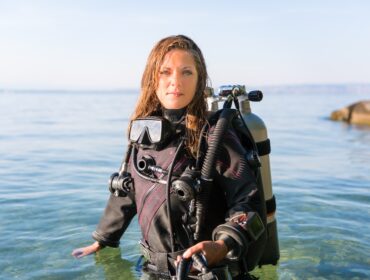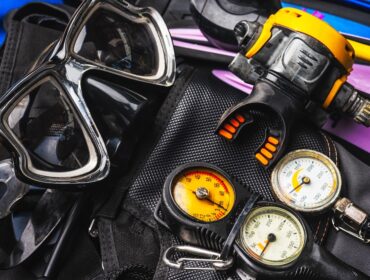As any PADI Instructor will tell you, the Controlled Emergency Swimming Ascent, or CESA, is one of the most important skills any diver can learn. It is something of an inside joke as to how thorough PADI is at explaining this skill compared to most other skills and with good reason: this is your last chance to survive in an out of air situation.
When To Use a Controlled Emergency Swimming Ascent
This really is the last attempt to survive when you run out of air. The CESA comes in handy when you’ve broken multiple other rules:
- You haven’t monitored your air regularly and now you’re out
- You don’t have a redundant air source like a pony bottle
- You aren’t close enough to your buddy to either buddy breathe or do an alternate air source ascent
Some experienced divers have experienced success with this skill at depths beyond 30 feet, but as a general rule (and following PADI guidelines) this skill should not be attempted from deeper than 30 feet.
How To Do a Controlled Emergency Swimming Ascent
When you have taken your last breath – hopefully you recognize it from out of air drills during your training – and realize your buddy is not close enough to you, follow these steps:
- Get into your normal ascent position with your right hand over your head to ward off any obstructions and your left hand holding your BCD inflator/deflator.
- Begin kicking slowly towards the surface. At no point should you ascent faster than your normal ascent rate.
- Exhale continuously while swimming to the surface.
- DO NOT: drop your weights or remove your regulator from your mouth. This skill is designed to be done at a safe ascent rate and it’s better to breathe against an empty regulator than to breath in water.
- Upon reaching the surface, KICK! If you allowed the proper amount of air out of your BCD on ascent, you should be neutrally buoyant at the surface. But since you’re out of air, you’ll need to manually inflate your BCD. So kick hard and get a few lungs full of air into your BCD.
You should now be safely at the surface! Either wait for your buddy or head back to the boat.
How To Avoid a Controlled Emergency Swimming Ascent
This one is easy: monitor your air supply. If you don’t run out of air, you don’t need to do a CESA.




